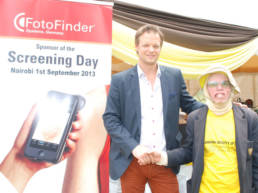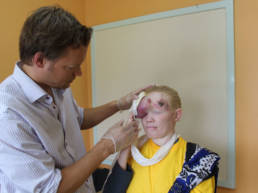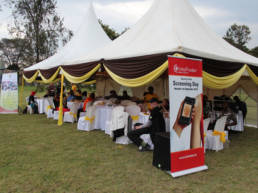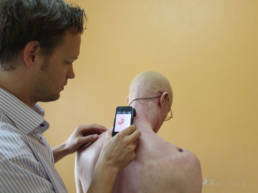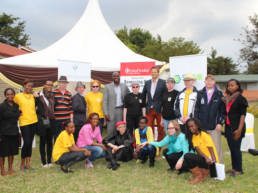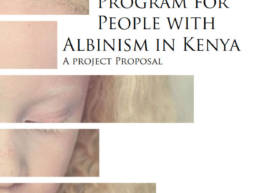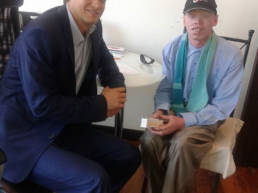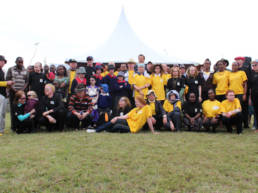Dr. Stasch and his team conducted a one-day screening for Persons with Albinism (PAWA) in Sept 2013.
This initially took place as a pilot project in conjunction with the Kenya Albino Child Support (KACSU) and The Albinism Society of Kenya.
The targeted audience were both adults and children. Screening included collection of biodata, mapping of any suspicious skin lesions and patient education about regular skin examination. Dr. Stasch also organized for surgical care of several individuals affected with skin cancers, to have these removed, excised and the resulting wounds reconstructed.
Persons with Albinism (PAWA) are faced with a unique and tragic cycle. Due to their difference in appearance and prevailing cultural perceptions towards them they are shunned from the community. According to Okoro, a researcher in Nigeria, “The sun and society are hostile to the albinos. Under the tropical sunshine, their melanin-deficient skin develops wrinkles, lentigines, actinic keratoses, epitheliomata and skin cancers from which they may die in early adult life or in middle age. Myopia and
other ocular defects retard the progress of many Persons with Albinism in school and they eventually drop out to seek disastrous menial outdoor occupations”.
Implications for Persons with Albinism are huge in Kenya. The condition is largely considered with a lot of stigma such that most albino patients do not present themselves for regular health examinations. Persons with Albinism are at a much higher risk of developing skin cancer (almost 10 times more than the average population). This, coupled with the fact that no proper initiative for solar protection exists, means that most Persons with Albinism under the age of 20 already have features of premalignant skin lesions. Left unattended, as they often are, these lesions progress to malignant and metastatic lesions for which cure is often unsuccessful.
Few, if any programs involve widespread advocacy for provision of sunscreen products as well as regular screening for skin lesions. There has been a large social move towards advocacy for equal rights for Persons with Albinism as well as public awareness of the condition to minimize stigma. This has
been met with varied success.
One of the biggest challenges in provision of regular health care is access to health care of PAWA. This has a number of facets to it: poor infrastructure, lack of preventive information by the primary healthcare worker (often the clinical officer or nurse at the health center) and most of all, high cost of
sunscreen products. All these factors combined call for a largely mobile facility with the ability to reduce logistics/infrastructural challenges. This would then lay the basis for having a fully trained resource person in each region to act as the first contact for PAWA in the area.
The health care industry needs to go a step beyond raising public awareness to reduce stigma. Practitioners need to promote primary prevention of skin lesions, particularly in the tropics.
